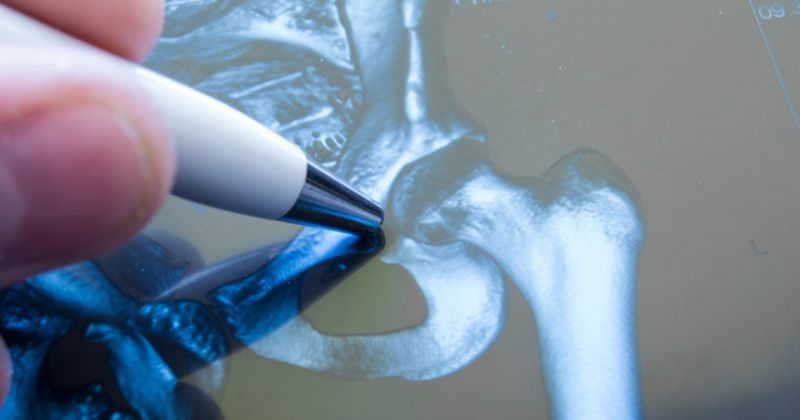Older men with rapid bone loss in distal radius at higher fracture risk
Key takeaways:
- Older men are more likely to have a fracture if they have a greater decline in cortical bone at the distal radius over 4 years.
- Repeat measurements did not improve fracture prediction in the cohort.
Older men who have a rapid decline in cortical bone over 4 years have a higher risk for sustaining a future fracture, according to findings published in The Journal of Bone and Mineral Research.
“Men with rapid bone loss typically have poorer microarchitecture, thinner cortices and lower estimated bone strength than men without rapid bone loss,” Pawel Szulc, MD, PhD, senior research fellow in epidemiology of osteoporosis at INSERM UMR 1033 in Lyon, France, and colleagues wrote. “However, the link between the prospectively assessed decline in bone microarchitecture and fracture risk has not been thoroughly studied. Therefore, our aim was to assess the association between the prospectively assessed decline in bone microarchitecture and the subsequent risk of fracture in a cohort of older men followed for 12 years.”

Researchers conducted a prospective cohort study of men aged 60 years and older from the Lyon region in France. Participants responded annually to a short questionnaire about incident fractures. DXA scans and high-resolution peripheral quantitative CT imaging were conducted at 4, 8 and 12 years. Bone microarchitecture deterioration at the distal radius and tibia were measured at follow-up. Incident vertebral fractures were analyzed and confirmed during follow-up.
Of 732 men included in the study, 109 had an incident fragility fracture after the 4-year follow-up. The median time to first fracture was 51.6 months. Men who sustained fractures had a more rapid decrease in areal bone mineral density at the hip and faster decreases in total volumetric BMD, cortical BMD, cortical thickness, cortical area trabecular BMD, inner trabecular BMD and trabecular thickness at the distal radius than those who did not have a fracture. Each 1 standard deviation decline in lower baseline areal BMD (HR = 1.71; 95% CI, 1.3-2.24) and femoral neck BMD (HR = 1.58; 95% CI, 1.22-2.03) was associated with a higher risk for fracture.
After adjusting for confounders, faster decline in total volumetric BMD, cortical BMD, cortical area and cortical thickness, and rapid increase in trabecular area were associated with an increased risk for fractures. Faster decrease in trabecular thickness was also associated with a higher risk for fractures.
Of the men who sustained a fracture, 14 had multiple fractures during follow-up. Men with rapid decreases in distal radius total BMD, cortical BMD, cortical thickness and cortical area, and those with faster trabecular area expansion had a higher risk for sustaining one fracture and for sustaining multiple fractures. Additionally, a faster decrease in ultradistal areal BMD was also associated with a higher risk for multiple fractures.
There were 48 men who had incident major osteoporotic fractures in the study. Each 1 standard deviation decrease in total BMD, cortical BMD, cortical area, cortical thickness and inner trabecular BMD, and each 1 standard deviation increase in trabecular area and heterogeneity of trabecular separation at the distal radius was linked to an increased risk for major osteoporotic fractures.
“A faster decline in cortical bone at the distal radius was associated with a higher fracture risk after adjustment for relevant confounders,” the researchers wrote. “This link was stronger for major osteoporotic fractures and multiple fractures. Of note, faster cortical bone loss was related to increased fracture risk after adjustment for the baseline value and after adjustment for the follow-up value. This suggests that rapid cortical bone loss is associated with high bone fragility regardless of the value of the high-resolution peripheral quantitative CT measure at a single time point.”
The researchers noted repeated bone scans did not improve fracture prediction in the study and the utility of repeated measures of areal BMD for older men must be analyzed more in future research.
